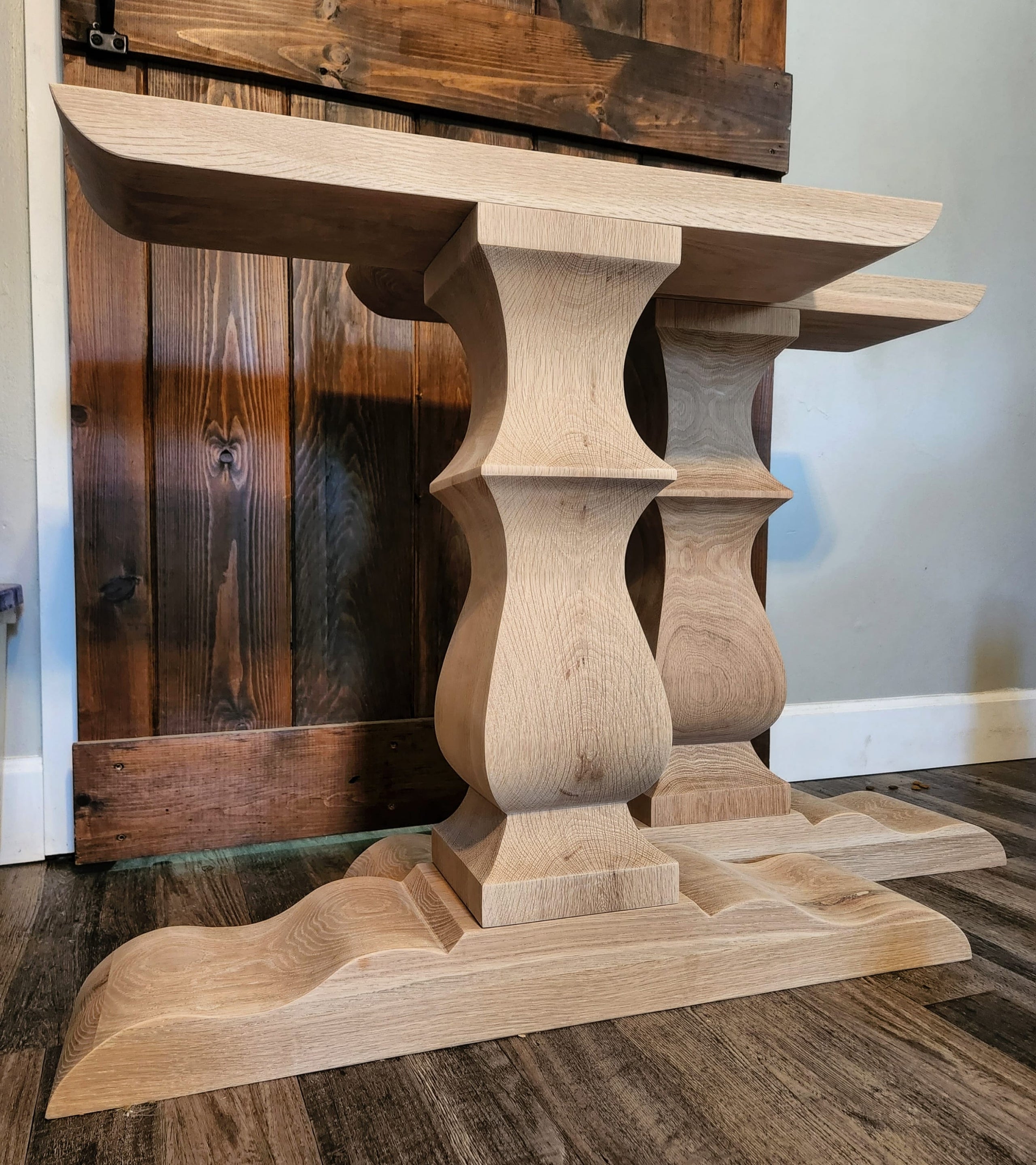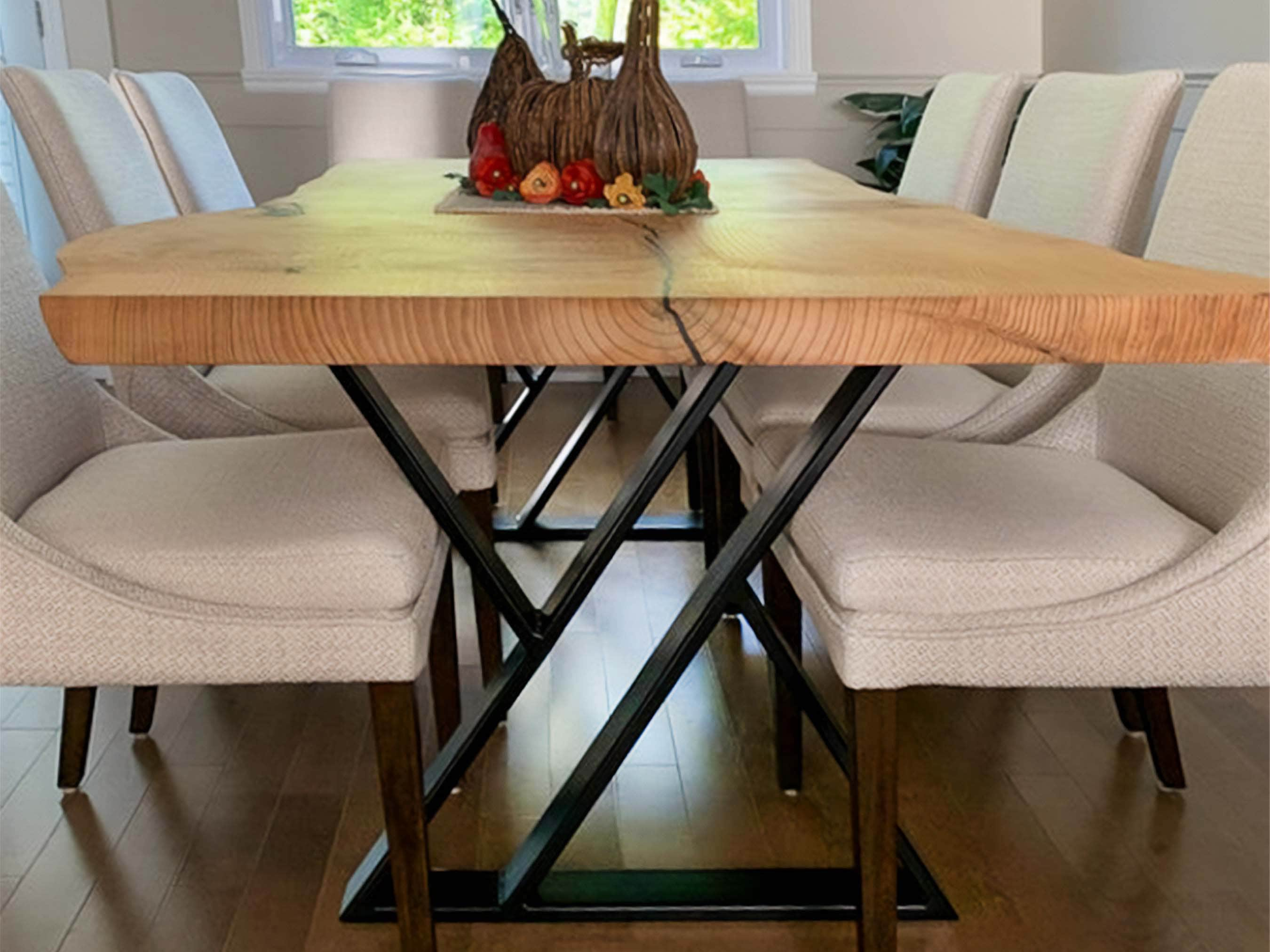Top Trends in Dining Room Table Legs to Raise Your Dining Space
Top Trends in Dining Room Table Legs to Raise Your Dining Space
Blog Article
A Comprehensive Take A Look At Table Leg Styles: Discovering the Perfect Match
Selecting the ideal eating table leg style is crucial for both visual appeal and functional capability. For those with larger tables, trestle legs make sure sturdy support, whereas hairpin legs introduce a mid-century modern vibe with their minimal design. The x-shaped legs blend contemporary design with boosted security.
Conventional 4 Legs
Among the various kinds of eating table leg designs, the conventional four-leg style continues to be a classic choice for lots of houses. 4 legs provide well balanced assistance, guaranteeing the table remains steady and capable of bearing substantial weight (dining room table legs).
From a visual viewpoint, the typical four-leg style can be easily adapted to numerous indoor styles. Whether crafted from wood, steel, or a combination of materials, these legs can be intricately sculpted, streamlined and minimalistic, or anything in between. Their adaptability allows them to enhance both rustic and modern settings seamlessly.
In addition, the uncomplicated structure of the four-leg design promotes simplicity of motion and placement within an area. Unlike even more complex bases, this design reduces obstructions, providing enough legroom for restaurants. In summary, the standard four-leg table leg design marries sustaining sophistication with useful capability, making it an astute choice for those seeking both kind and feature in their eating furniture.
Stand Base
Frequently commemorated for its stylish and space-efficient layout, the stand base is a notable choice to the conventional four-leg arrangement in table leg designs. This distinctive base normally features a solitary main column supporting the table top, which can differ in form, from ornately carved timber to sleek, contemporary steel. One of the main advantages of the pedestal base is its capability to take full advantage of legroom and seating flexibility. Without corner legs, restaurants are managed greater flexibility of movement, making it a suitable selection for round and oblong tables that advertise even more intimate and inclusive events.
In addition, the stand base's main assistance can deal with significant weight, permitting for using heavier tabletops, such as marble or thick hardwood. This strength combined with its visual convenience makes the stand base a preferred selection in both typical and modern interior settings. It can perfectly integrate with various design themes, from classic style to minimal modernity. The central column itself provides a canvas for elaborate styles and creative expressions, adding an element of aesthetic passion underneath the table. In summary, the pedestal base combines functionality snappy, making it an improved and functional choice for diverse eating atmospheres.
Trestle Legs
Trestle legs supply a robust and classic structure for dining tables, identified by their horizontal cross-bracing and Bonuses sturdy assistance beams. Stemming from middle ages times, this style has actually developed yet retained its essential framework, making it a seasonal fave in both standard and modern settings. The central trestle beam, commonly sustained by 2 or even more upright posts, provides exceptional stability, permitting bigger table sizes without the need for extra legs.
A substantial advantage of trestle leg tables is the sufficient legroom they supply. Unlike tables with 4 corner legs, the absence of blockages at the table's edges offers unblocked area for chairs and diners, enhancing convenience and ease of access. This makes trestle tables suitable for suiting bigger events, whether in a dining-room or a reception hall.
The visual adaptability of trestle legs is significant. Offered in a selection of materials such as timber, steel, and composite, they can be ended up to match a vast array of indoor styles. From rustic farmhouse to sleek modern-day designs, trestle legs can be personalized to fit specific tastes. Their long-lasting charm and practical advantages make trestle legs an engaging choice for those looking for both design and practicality in their table.
Hairpin Legs

The allure of hairpin legs lies in their simplicity and convenience - dining room table legs. Readily available in an array of products, consisting of steel and brass, they can be completed in many shades to complement different interior styles. Whether coupled with a rustic wooden table top or a contemporary glass surface, barrette legs effortlessly mix functionality with a touch of vintage charm
Sturdiness is one more remarkable feature of barrette legs. Despite their fragile appearance, these legs are engineered to bear considerable weight, ensuring the table stays stable and safe and secure. Furthermore, they are fairly easy to install, making them a popular choice for do it yourself lovers and professional furniture makers alike.
X-Shaped Legs

Created from materials such as steel, wood, or a combination of both, X-shaped legs can be tailored to match numerous design preferences. Steel legs frequently lend a sleek and commercial feel, ideal for loft-style apartment or condos and modern-day dining spaces. On the other hand, wooden X-shaped legs provide a warmer, a lot more rustic appeal, ideal for farmhouse or eclectic insides. The adaptability in materials permits home owners to customize their eating tables web to better fit their total design system.
Moreover, the design behind X-shaped legs makes certain also weight distribution, decreasing the threat of wobbling and enhancing durability. This makes them especially appropriate for bigger table that call for added assistance. Basically, X-shaped legs blend sensible design with modern aesthetic appeals, making them an ageless choice for varied dining settings.
Verdict
A detailed understanding of eating table leg designs reveals the distinct features and benefits of each design. Typical four legs use security and ageless appeal, while pedestal bases give legroom and a streamlined appearance. Trestle legs ensure robust support for larger tables, and barrette legs present a mid-century contemporary aesthetic. X-shaped legs integrate contemporary style with improved security. Choosing the appropriate leg style makes sure both functional and aesthetic fulfillment in any type of dining space.
Report this page